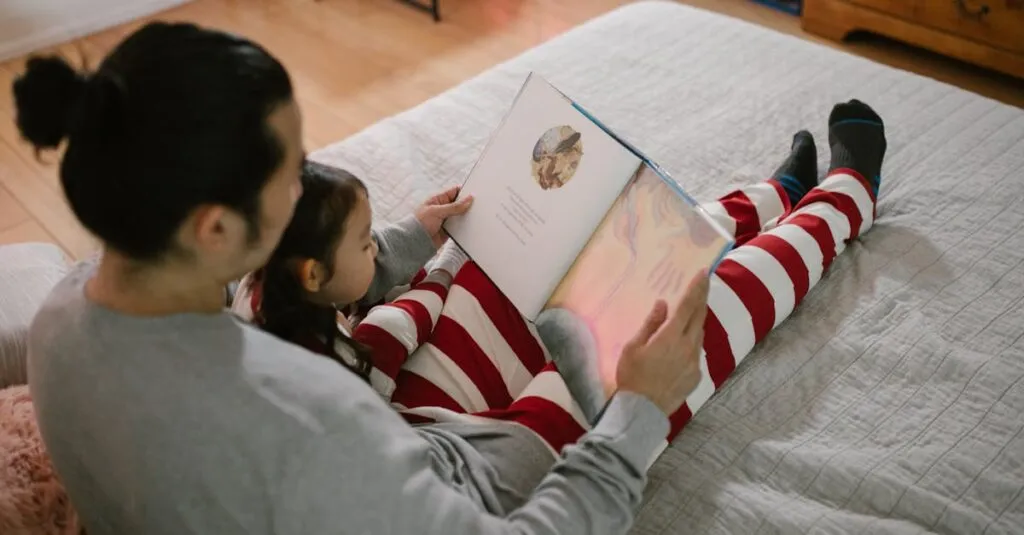Why Empathy Matters
Early Preschoolers are like tiny sponges, absorbing everything around them. Teaching empathy at this stage can shape them into compassionate adults. But why is empathy so crucial?
- It helps kids relate to others.
- It enables them to manage their emotions.
- It assists in conflict resolution.
- It creates a more harmonious playground (and household).
When youngsters understand empathy, they’re less likely to bop their siblings on the head with a toy truck. Instead, they might inquire about their sibling’s day! Early empathy lessons help kids grasp that kindness and understanding are solutions to most issues.
Consider using stories with characters who display empathy. This method makes understanding more natural and relatable for children. Want to see those warm, fuzzy results? Start working on empathy today!

The Magical World of Storytelling
Storytelling is a gateway to empathy, letting kids explore various perspectives. Imagine handing your preschooler a magic wand that lets them become a dragon one day and a princess the next. That’s the power of storytelling!
When children create narratives, they understand different feelings and imagine how others experience the world. You might find yourself learning that the dragon didn’t want to steal the princess’s crown but just needed a shiny hat to attend a dragon disco!
Encourage your child to develop stories where characters resolve conflicts with empathy. This activity aids them in connecting with their emotions and helps them understand diverse viewpoints.

Fun Writing Prompts for Little Hearts
Once upon a time, there was a game called writing prompts. It didn’t require magic or fairy dust, just a touch of imagination. Use writing prompts to help your preschooler dip their toes into the world of empathy and storytelling.
Promote prompts like:
- Write about a cat who learns to share his milk
- What does a lonely flower need to feel happy?
These prompts encourage kids to reflect on emotions and human-like experiences, even in fantastical settings. Remember that writing is meant to be fun! And if crayons, markers, and sticker-filled pages turn out to be involved, rejoice in the creativity. The goal is to foster discussion about feelings and actions in a lighthearted way.

Role-Playing: A Step Further
Role-playing takes storytelling up a notch by immersing kids in a world of empathy. It’s like acting class, kindergarten edition!
Suggest simple role-plays like:
- Pretending to be superheroes saving dolls in distress
- Explorers finding a lost puppy
You’ll be amazed at how your living room turns into a world stage. When kids step into someone else’s shoes, they start seeing the world from new angles. This approach not only enhances empathy but also boosts social skills.
Who knows? They might even pretend to be parents sharing the last cookie rather than fighting over it. The sky’s the limit for imagination, and role-playing makes empathy interactive and fun.

Handling Emotional Hurdles
Emotional challenges for preschoolers can be like navigating a sea of tantrums and giggles. Developing empathy helps them sail smoothly through these waves. Kids may struggle identifying and managing their feelings, and that’s okay.
The ‘Feeling Jar’ Tool
Starting with a ‘feeling jar’ can help. Fill it with slips of paper bearing faces showing different emotions. Let them pick one and discuss when they felt that way. This simple tool encourages conversation around emotions in an enjoyable setting.
Benefits of the Feeling Jar
- Encourages open conversations about emotions
- Makes identifying feelings easier
- Fosters compassion towards oneself and others
Compassion towards oneself and others becomes more natural when kids see feelings mapped out this way.

Invite Conversations and Connections
Creating a dialogue with your preschooler about empathy is delightful and insightful in equal measure. Encourage them to express emotions through stories and connect by asking questions like, ‘How do you think the caterpillar felt when it turned into a butterfly?’
These conversations offer glimpses into their understanding and emotional growth. Sharing personal childhood stories when you showed empathy can strengthen the bond and help them relate more. Don’t shy away from silly anecdotes! Maybe there was a time you felt for your pet hamster more than your siblings!
Sharing giggles broadens emotional openness and ignites further conversation on empathy.

